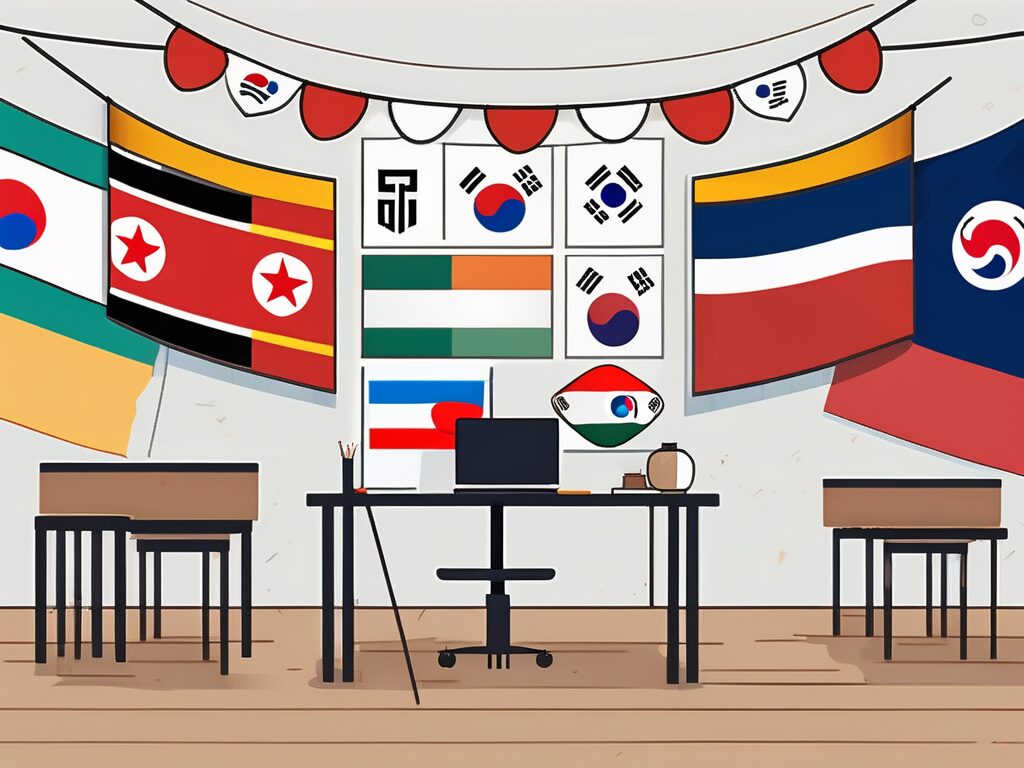Navigating Multicultural Classroom Challenges in South Korea 2025
As South Korea continues to evolve into a vibrant multicultural society, its educational landscape reflects this transformation. The integration of diverse cultures within classrooms presents a distinct array of challenges for educators and students. Addressing these challenges is essential for fostering an inclusive and effective learning environment that upholds academic excellence.
Language Barriers
The Complexity of Multilingual Classrooms
Language barriers represent a significant obstacle in multicultural classrooms. South Korea, traditionally a monolingual society, is now accommodating an increasing number of students from varied linguistic backgrounds. This linguistic diversity, while enriching, complicates the instructional process, particularly when Korean serves as the primary language of instruction.
Students who struggle to comprehend complex subjects due to language limitations may experience academic setbacks. Similarly, educators face the challenge of ensuring that all students, regardless of their language proficiency, grasp the curriculum effectively.
Strategies for Overcoming Language Barriers
To mitigate language barriers, the implementation of bilingual education programs is recommended. Drawing inspiration from successful models in countries like Canada, South Korean schools could adopt a dual-language approach, benefiting both non-Korean speakers and native Korean students by enhancing their language skills.
Additionally, leveraging technology can facilitate communication. The integration of advanced translation software and language learning applications can serve as valuable tools in the classroom, enabling students to engage with the material more effectively.
Cultural Differences
Understanding Diverse Cultural Norms
The presence of varied cultural backgrounds in classrooms introduces another layer of complexity. Each culture embodies unique values, traditions, and social norms. In South Korean classrooms, where Confucian principles such as respect for authority and group harmony are emphasized, integrating students from cultures with differing values necessitates careful consideration.
For instance, students from Western cultures may be accustomed to expressing their opinions openly, contrasting with the more reserved dynamics prevalent in South Korean educational settings. Such differences can lead to misunderstandings if not addressed proactively.
Fostering Cultural Understanding
To navigate cultural differences effectively, schools should consider implementing cultural exchange programs. These initiatives can provide students with opportunities to share their cultural heritage, promoting mutual respect and understanding. Furthermore, incorporating multicultural education into the curriculum can enhance students’ awareness of global perspectives, fostering cultural sensitivity.
Social Integration
Challenges of Social Inclusion
Social integration poses another challenge in multicultural classrooms. Students from diverse backgrounds may experience feelings of isolation or exclusion, which can adversely affect their academic performance and overall well-being. This situation can be likened to attending a gathering where one feels like an outsider.
Enhancing Social Integration
Creating an inclusive classroom environment is paramount for promoting social integration. This can be achieved through collaborative activities and group projects that encourage interaction among students, thereby fostering a sense of community. Additionally, schools should consider providing support services, such as counseling and mentoring programs, to assist students in acclimating to their new educational environment.
Conclusion
While the challenges associated with multicultural classrooms in South Korea are significant, they are not insurmountable. By adopting innovative strategies and committing to inclusivity, educators can transform these challenges into opportunities for growth and learning. Embracing diversity enriches the educational experience and prepares students for a globalized world.
In summary, addressing language barriers, navigating cultural differences, and promoting social integration are critical components of fostering an effective multicultural classroom. By prioritizing these elements, educators can ensure that all students thrive in a diverse learning environment.
Elevate Your Teaching Career with IPGCE
As you navigate the complexities of multicultural classrooms in South Korea, consider enhancing your qualifications with the International Postgraduate Certificate in Education (iPGCE). This Level 7 program is designed to support educators in achieving greater success in diverse educational settings. By enrolling in the UK’s leading Teacher Training Course, you will significantly increase your prospects for securing international teaching positions and advance your career. Join a global network of professionals, gain insights into international curricula, and balance your professional development with your current commitments. Enroll in the iPGCE program today and prepare yourself for a multicultural educational landscape with confidence and competence.

